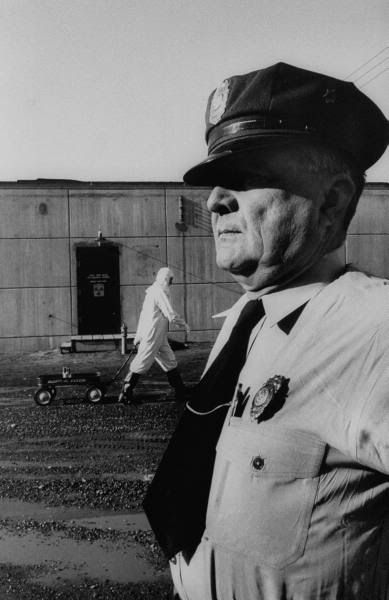Friday Quote: “New Light on the Old Frontier”

At the end of Atomic Frontier Days (University of Washington Press) by John Findlay and Bruce Hevly, the authors tell us about a Gene Autry 1935 serial called The Phantom Empire. I've seen this film in its condensed version, and it's one of the most hilariously bad sci-fi movies of all time, called Radio Ranch. In short, an underground civilization called Murania attempts to prevent the singing cowboy Autry from broadcasting his weekly radio show from his ranch. What else is a secret, advanced civilization to do?
The fate of mankind hangs in the balance. But the authors see an interesting precursor to the Hanford Nuclear Reservation here. Autry, of course, represents the wild frontier, yet it's a frontier changed from the Tim Mix days. It has state-of-the-art broadcast technology. The secret underground civilization is even more advanced, and its scientists are busy inventing dangerous marvels that are dependent on radioactive materials. Like an "atom-smashing" machine that can destroy civilization itself. Atomic science was already at home on the range before it was even a reality.
All this was filmed before Hanford was conceived, or the Manhattan Project that created it was launched. But it previews a fascinating fusion between the Old West and the Atomic Age. A 1948 poster for a local Richland celebration, Atomic Frontier Days, shows the atom symbol against the glow of a giant sun above a covered wagon with the slogan, "New Light on the Old Frontier."
This fusion was more than symbolic, it was real to a point. Frontier thinking helped create, sustain, and adapt Hanford; it contributed to some of its fundamental problems and challenges. The forces that have made it what it is are complex, but they emerge from geographic, psychological, technological, commercial, and scientific approaches that are both national and very local. Atomic Frontier Days, subtitled "Hanford and the American West," written by two University of Washington historians, attempts to get at the major dynamics that created it.
For many people, Hanford is a word that causes us to hit the snooze-button, partly because it is the problem that will, literally, never go away: The half-life of plutonium waste is 24,000 years. Built during WWII as part of the Manhattan Project, its original purpose was to generate the plutonium needed to make atomic bombs. Hanford was not a think-tank like Los Alamos, but a manufacturing facility run by people who understood chemicals and arms. It was less about physics, the authors tell is, than about heating, cooling, and plumbing.
Excerpt from Knute Berger's column on Atomic Frontier Days by John Findlay and Bruce Hevly at Crosscut. Read the rest of his article HERE. Tonight, Findlay and Hevly are reading at Auntie's Bookstore at 7:00pm.
(Note on the photo: Taken outside a laboratory, a toy wagon is used to carry radioactive material at Hanford in 1955. Photo by Nat Farbman, from the worthwhile LIFE/Google archive. Check it out.)
